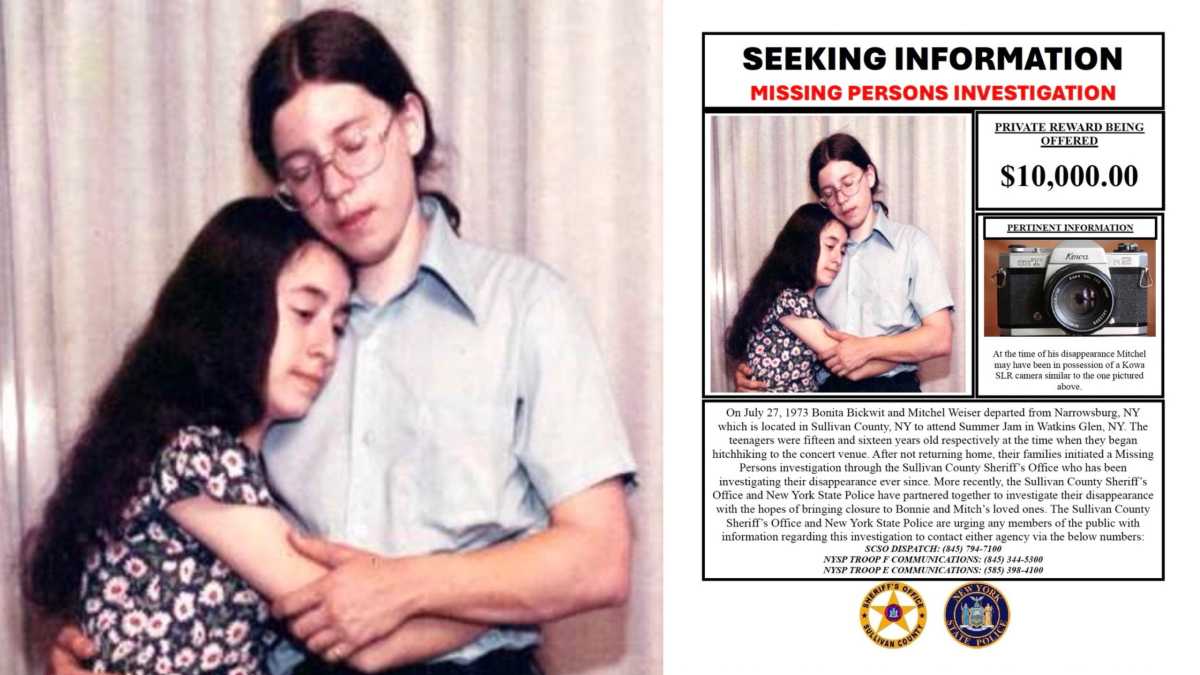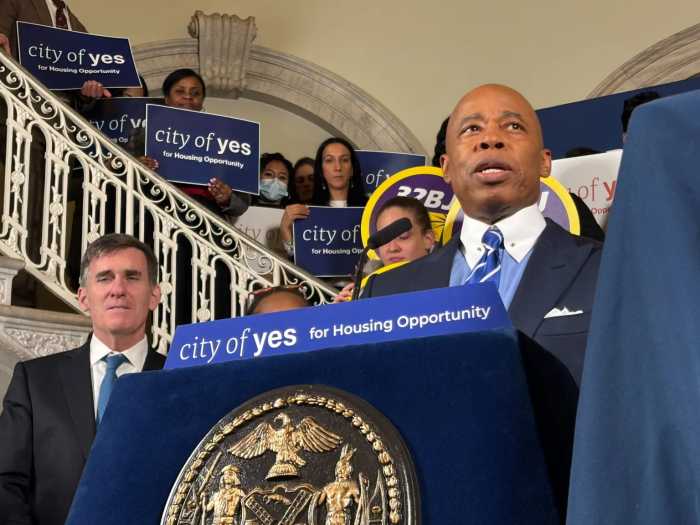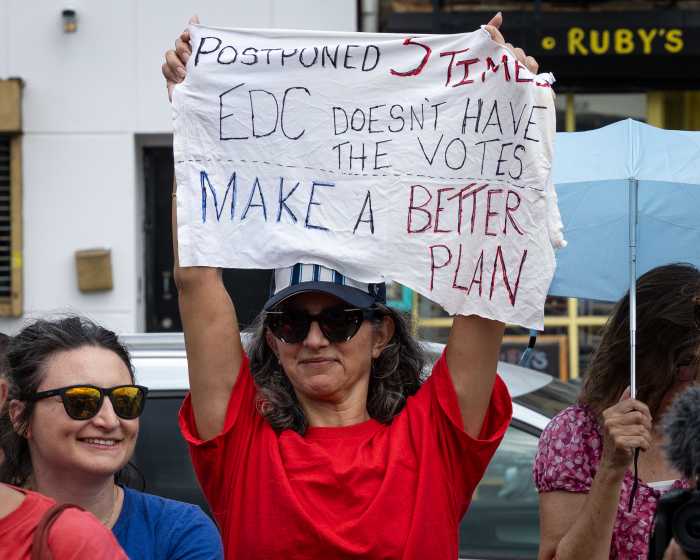Eric Adams won the Democratic mayoral primary in 2021 on a promise to combat crime rates that spiked during the COVID-19 pandemic.
Now, nearly four years later, a crowded field of candidates in the 2025 NYC Mayor’s Race seeking to replace Adams argue he has not delivered on his core campaign pledge. They say that while murders and shootings have seen double-digit drops under Adams, his administration has not done enough to make New Yorkers feel safe.
Below, amNewYork breaks down the public safety plans of each of the major Democratic mayoral candidates, in alphabetical order.
Adrienne Adams

City Council Speaker Adrienne Adams’ campaign shared key points from her forthcoming public safety plan, which it said it will be releasing in full sometime in the next few days.
Like many of her Democratic primary competitors, Speaker Adams wants to boost the ranks of the NYPD by filling 2,000 vacant posts, while improving retention to stem a mass exodus from the department. She also wishes to more effectively manage the NYPD from City Hall, following reports that Mayor Adams often undermined its leadership.
Other areas she plans to focus on include bettering trust between the NYPD and the communities it interacts with, solving more unsolved crimes, and refocusing cops on core crime-fighting duties instead of mental health-related actions.
When it comes to the subways, Speaker Adams wants to place dedicated officers on the system rather than rotating them in and out. She emphasized that they should focus on crime, and mental health outreach should be handled by social workers who are focused on getting those with severe mental illness on the system into a “continuum of care.”
The speaker also pledged to bolster violence prevention and intervention programs as well as services for crime victims.
Michael Blake

While former Bronx Assembly Member Michael Blake has not released a detailed public safety plan, he has laid out some of his key priorities for tackling the issue on his campaign website.
Among his top public safety priorities, Blake listed investing in violence interruptors and youth employment programs; dispatching crisis response teams rather than police to address those in mental health crises; and establishing “community oversight boards” to provide more police oversight.
Blake also says there is a need to “divest from systems that harm” in reference to “overpolicing. He proposes shifting funding to housing, health care, and education instead.
Andrew Cuomo
The former governor has made public safety one of the central focuses of his campaign, arguing he is the candidate best positioned to “save” the city from what he has characterized as increased crime and disorder under Adams’ mayoralty.
The marquee proposal of Cuomo’s plan is to boost the NYPD’s ranks by 5,000 officers, or 15%, which would bring its headcount to roughly 39,000. His campaign says that growing the number of cops would pay for itself by cutting down on the city’s outsize overtime spending.

Cuomo also proposed doubling the number of cops patrolling the city’s subways to 4,000. His subway safety plan also calls for installing high-barrier turnstiles faster, creating a team of inspectors within the MTA dedicated to fare evasion enforcement, and appointing a subway safety director within City Hall.
Brad Lander
Brad Lander voted to defund the NYPD by $1 billion in 2020 when he was a City Council member. Five years later, as city comptroller and mayoral candidate, Lander has reconsidered his position on police funding, moving more toward the center on the issue.
Lander’s public safety platform promises to bring the NYPD’s headcount up to its budgeted amount of just over 35,000 cops with strategies like opening the police cadet corps to high school graduates who do not have college credits. Like Cuomo, he also pledged to rein in NYPD overtime spending.

Additionally, the comptroller has committed to asking current Police Commissioner Jessica Tisch, whom Mayor Adams named to the post last November, to remain on as top cop. He said she has done a “strong job of pushing for reform, accountability, and outcomes-driven decision-making” in the department.
Lander also wants to expand methods for combating gun violence that do not involve police. Those include reforming the city’s network of violence interruptor organizations — known as the Crisis Management System (CMS) — and guaranteeing summer jobs for those at risk of getting involved in gun violence.
Zohran Mamdani
In contrast with many of his rivals, Queens Assembly Member Zohran Mamdani is pitching a public safety plan that does not include adding more cops to the NYPD’s ranks.
Instead, the Democratic socialist proposed establishing a new city agency he has dubbed the “Department of Community Safety.” Mamdani envisions the entity assuming certain responsibilities from the NYPD, including responding to mental health crises either on the streets or in the subways, stemming gun violence, and providing services to victims.
The agency would have a $1 billion budget. Mamdani says those dollars would in part come from $400 million in already allocated money and $600 million in new funding, which could be gleaned from raising income taxes on the wealthiest New Yorkers.

The Assembly member committed to investing $362 million in expanding the city’s mental health outreach programs, including a 150% increase to its B-HERD initiative and placing mental health teams in the 100 subway stations with the greatest need.
Zellnor Myrie
Although State Sen. Zellnor Myrie has made his name as a criminal justice reformer, he, too, has pitched a plan to boost the NYPD’s staffing levels.
Myrie has called for adding roughly 3,000 more uniformed cops to the NYPD to bring its headcount back to above 36,000 in 2018.
The state lawmaker also pledged that his NYPD would solve 100% of shootings in the five boroughs. He says that the goal can be met by hiring 2,000 new detectives, creating a unit dedicated to solving non-fatal shootings, and forming a task force to monitor the city’s shooting investigation clearance rates.

When it comes to policing the subways, Myrie wants to continue surging cops onto the system, with an eye toward switching up how they are deployed. He also proposed deploying 150 co-response teams, made up of mental health professionals and officers, to approach and assist those with severe mental illness on the city’s subways 24 hours a day.
Myrie also wants to strengthen police accountability by devoting 1% of the NYPD’s budget to the Civilian Complaint Review Board police oversight body.
Jessica Ramos
Although state Sen. Jessica Ramos has not released a detailed public safety plan, her campaign website outlines five ways that she would take a “holistic approach” to addressing the issue.
Ramos’s public safety agenda includes points like combating gun violence through community-based violence prevention, putting more resources toward hate crime prevention, increasing independent oversight of the NYPD, and boosting funding for mental health response teams and violence interrupters.
However, increasing the size of the police force is not among her listed priorities.

Scott Stringer
Former city Comptroller Scott Stringer, who also called for defunding the police in 2020, was the first major Democratic mayoral candidate this election cycle to pitch a public safety plan that proposed hiring thousands more cops.
Similar to other candidates’ proposals, Stringer’s plan would see the city hire an additional 3,000 cops to bring the NYPD’s headcount back to its budgeted amount of 35,000. In order to attract more officers, Stringer pledged to recruit from underrepresented communities by working with schools and community groups, as well as attracting cops from other jurisdictions by offering subsidized housing and relocation assistance.
Stringer is also proposing appointing a “Deputy Mayor for Quality of Life” who would oversee a new quality of life tracking system he would call “QualitySTAT.” Based on the NYPD’s already existing performance measurement system, CompStat, QualitySTAT would pull in real-time data from the NYPD and other city agencies, including the Departments of Homeless Services and Sanitation. The city would use the data to improve how it addresses quality of life issues.
Stringer also pledged to place a cop on every subway car to deter subway crime.

Whitney Tilson

Hedge fund manager Whitney Tilson, who has also made public safety a core tenet of his campaign, has the ambitious goal of cutting crime by 50% during his tenure.
While he has not released a detailed public safety plan, Tilson outlined three ways he would cut crime on his website.
First, Tilson said he would boost investments in areas of the city with the highest crime rates — though he did not go into specifics about how he would do so. Second, he wants to boost the size of the NYPD’s ranks by 10%, also without outlining which specific steps he would take.
Lastly, Tilson pledged to push for further rolling back 2019 bail and discovery reforms at the state level, arguing those changes have allowed far too many people who commit crimes to end up back on the streets.




































